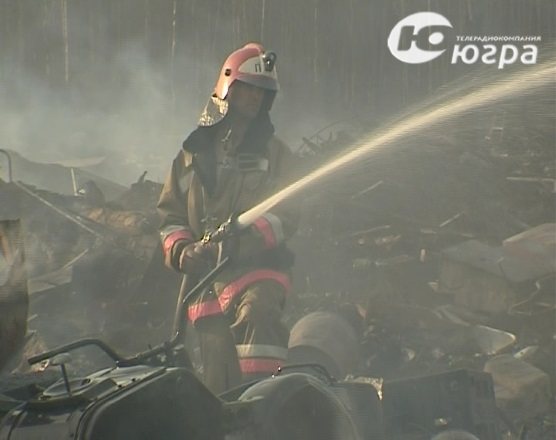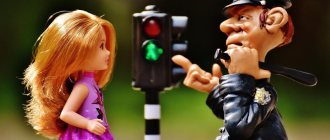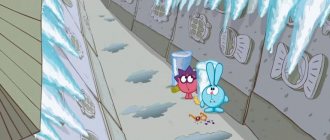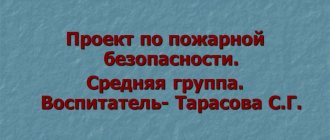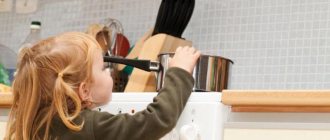The ABCs of safety in the city and at home: an integrated approach
Parents and educators must take care of the child’s health and protect him from dangers. Adults may not always be there. This means that you need to teach your child how to behave in a given situation. “Formation of a culture of safe behavior in children aged 3-7 years” will help you develop a good consistent program for classes in kindergarten . It pays attention to behavior at home, among people, in nature, and tells how to avoid dangerous situations. The CD “Experience in mastering the educational field by children 3-7 years old” is entirely dedicated to road safety.
Many different situations about behavior in public places, while traveling, in transport, at a party are discussed in the book “The ABC of Safe Communication and Behavior” . It can be used to prepare lessons with children and recommended to parents for conversations at home. It is also well suited for mothers whose children do not go to kindergarten.
It is important to remember one point: safety training must be systematic. It is necessary to return to the topics already discussed, consolidate the material, and then check how the kindergarteners have mastered it. Another serious aspect is that during the classes you need to avoid moralizing and mentoring tone. Otherwise, the child will immediately become uninterested. But if you approach the activity as a game, it will be just right!
ABC of safety for preschool children
Yulia Verkhozina
ABC of safety for preschool children
Many parents have enough time to feed their child or take a walk with him, teach him new games, words, and attend a developmental group together. But not everyone thinks about the problem of protecting him from surrounding dangers in everyday life: at home, on the street, in communication with strangers , in contact with animals. But such a problem exists and deserves attention. How many accidents, most of them of the same type, could have been avoided? It is enough to devote five minutes a day to ensure that the ABC of safety for preschool children forms the basis for the behavior of your own child and helps him develop an understanding of dangerous situations and risk factors, teaches him to anticipate danger from different sources, avoid them if possible, act according to the situation and strictly follow safety .
Child safety at home.
A preschooler spends a significant part of his time , so it is important to strengthen his understanding of objects used in everyday life, interaction with which can be dangerous to his health or life. The child should learn from his parents what they are for and how to use them in order to avoid an accident.
Conventionally, all items can be divided into two groups:
those that a child should not touch without the permission of adults. First of all, this applies to electrical appliances and household appliances: children's safety is directly related to the ability of parents to point out the consequences of careless handling of a gas stove, socket, or hot kettle. Secondly, this applies to medicines, alcohol, household chemicals, cutting and piercing devices and instruments, which should be stored in places inaccessible to children. The most effective way to convey the essence of the danger to a child is a direct ban under pain of punishment, supplemented by “live”
examples.
those that are permissible to use independently, but after learning the skills to use them. The principle is this: eating with a fork or opening a window is possible, running with a fork in your hand and leaning out of an open window is not possible, and why.
Child safety on the street.
The greatest danger to a child is the street. A preschooler should know where children can walk and where not. Using illustrative examples, it is necessary to clarify what a street, pedestrian sidewalk and roadway are, and who can move along them. When walking with your child, you should pay his attention to surrounding objects and objects that he can only encounter on the street. These are trucks and cars, animals, insects, strangers. Tell what exactly can be dangerous, for example, a wasp can sting, and a dog can bite, so it is better not to contact them. In other words, the ABC of safety for children on the street is a set of basic knowledge about the rules of behavior outside the home.
preschoolers the rules of interaction with strangers deserves special attention Why is communicating with strangers dangerous for him? The fact that the child is not aware of the motives of their behavior, does not know their intentions and does not foresee the consequences. Considering the situation when an adult uncle offers candy for the children to go for a ride with him, parents should clearly formulate why this is dangerous. At the same time, point out the details: a bad person does not always have an unpleasant appearance. And to make it easier to understand, give an example that the child can understand : “Do you remember the fairy tale about the dead princess, when the evil stepmother pretended to be a kind old woman and treated her to a poisoned apple?” Next, the child needs to be taught simple methods of defense in the form of a loud call for help, and better in such a manner that others do not perceive it as an ordinary childish whim (for example, “This uncle is not my dad!”
,
“Help me, I don’t know him!”
).
The child also needs to be explained that strangers can be useful if he suddenly gets lost in the crowd and has to use the help of adults. Daily repetition with children of their names, surnames and at least the name of the street where they live will definitely bear fruit.
Road safety preschoolers .
Teaching your child some rules regarding traffic is only half the battle. The rest is to form and consolidate practical skills of safe behavior when crossing the roadway and while in transport. Due to psychological characteristics, preschoolers tend to see an incomplete picture of what is happening, since their field of vision is narrowed to individual, most striking details. This means that the child is unlikely to accurately determine the distance to an approaching car or correctly estimate its speed. In order not to create emergency situations, the ABC of safety for preschool children should be based on the principle “do as I do”
.
This means that the best example for a child is the behavior of his parents. Are you in a hurry? Still, wait for the traffic light to allow movement. Are you traveling in a car ? Buckle up and don't speed. Actions like this are much more effective than the daily repeated phrase:
. "
You need to start getting acquainted with the rules of the road as early as possible. They are easy to learn in a playful way; appropriate safety pictures for preschool children , clearly demonstrating the road situation. Then you can consolidate your knowledge in practice by observing the actions of pedestrians and the movement of cars.
Fire safety for preschoolers .
Fire is an ardent element that can be both useful and dangerous. What are the benefits of fire? It can warm you up when it's cold. Why is open fire dangerous? You can get burned, so you need to keep your distance and not approach it. It is important to convey this to the child. And it is better to consolidate the acquired knowledge in practice, and the basics of safety for preschool children in terms of handling fire, as well as traffic rules on the roads, are best studied in a playful way. A simple re-enactment: a fire truck is rushing to a call, children were playing with matches, a fire occurred. Firefighters need to quickly save children in trouble. Fortunately, the firefighters were in time! They put out the fire and told the children: “You can’t play with matches, it’s life-threatening!”
.
Parents should take into account that there should be few direct prohibitions when coordinating the child’s behavior, otherwise they will not be taken into account. To teach the basics of safety , it is better to use positive ways to influence a preschooler , in particular, to clearly demonstrate examples of critical situations and model their possible consequences, and for each case of compliance with the learned rules, praise him or otherwise encourage him.
Traffic rules for kids
One of the biggest dangers for a child in the city is transport. These are cars racing along the roadway and even standing on the side of the road. It must be said that people who walk are called pedestrians, and their relationship with transport is regulated by rules. And these rules must be strictly followed. The following is worth explaining:
- What is a roadway, public transport, zebra crossing, traffic lights, road signs, headlights. What other important things have you forgotten? Help!
- Why are sidewalks intended for pedestrians and roadways for cars? And why there are well-mannered pedestrians and cars, and there are ill-mannered ones.
- What to look for when you need to cross the road (right and left, traffic lights, permitting signs).
- Why is it important to stand out in the dark, when a driver may not notice a pedestrian? What are reflectors and flickers, and why are they needed?
- Why do you need to let all cars on the road pass, even slow ones? Especially if the road is slippery, and your mother is waiting at home, baking fresh buns.
- Why cars are dangerous (heavy and fast), why even standing cars are dangerous.
- How to get around a tram, bus and a parked car.
There are exciting games on the topic of traffic. For example, the training book “Road Rules. The ABC of Safety" will help develop caution and anticipate dangers. You can come up with games yourself. After studying the material, we offer children situations, and they choose whether what is proposed is allowed or prohibited. The situations are very diverse, real or fabulous, the main thing is to interest the children. Preferably, not only the most active ones, but also the entire group. For example, we ask whether it is possible or not:
- run to red very quickly if you need to go home and there will be cartoons soon;
- ride a “hare” once a week;
- give up your seat on the bus to your grandmother;
- walk along a zebra crossing with headphones on;
- run out onto the roadway if there is a 10 ruble coin there.
Lesson - KVN in 5th grade on the topic: “The ABC of Safety”
Lesson - KVN in 5th grade on the topic: "The ABCs of Security."
Objectives: to summarize students’ knowledge of the rules of behavior in extreme situations, to teach how to act in dangerous situations, to develop the ability to work in a group. Equipment : musical accompaniment, posters with proverbs about safe behavior, first aid kit, felt-tip pens, album sheets.
During the classes.
1. Organizational moment. The teacher invites students to formulate the topic of the class hour, paying attention to the board (posters, proverbs), first aid kit, and traffic signs. Students formulate the topic of the class hour. The teacher explains the rules of the game: 3 teams take part in the game. The rules of the game are simple. For each answer, the team receives tokens. Whoever has the most tokens wins. But remember that KVN is a game of friends. 2. Game program. In the age of technological progress and the conquest of space, in the era of market relations, what do you think is most valuable to us? - Of course, health. Human health is the main value in life. You can't buy it for any money. Health is our priceless gift, It is not limitless, It resembles a ball And everything in it is harmonious. There is love and beauty in it, There is value and greatness. Kindness strengthens everything. And the symbol is our personality. But our health depends on how we respond to emergencies and whether we follow safety rules. Topic: “Fire safety” 1 competition. Riddles competition. The teams take turns asking questions - riddles. 1. So that there is no fire, don’t play with me, I am the sister of fire, little...(match). 2. You saw smoke - don’t yawn, call us quickly. (Firefighters). 3. Where people are careless with fire, there will definitely be fire. (Fire) 4. You won’t get fire from little me. (Spark) 5. He who does not take care of me will soon get burned. (Spark). 6. On the table, in a cap, and in a glass bottle, a friend settled - a cheerful light. (Light bulb) Each correct answer: 1 token. Fire is one of the greatest wonders of nature that man became acquainted with at the dawn of his existence. Fire gave people warmth and light, protected them from wild animals, and was used for cooking and making tools. Thanks to fire, humanity rushed into space. People have learned to make and store fire. However, having escaped from human control, it turned into a terrible disaster - a fire. 2 competition. Situational tasks: “How to behave if suddenly at home...”. 1. What to do if a kitchen towel catches fire? 2. The oil in the frying pan caught fire. What to do? 3.What to do if there is an unpleasant smell of burnt insulation in the apartment? Answers. You need to throw it in the sink and fill it with water. If the sink is far away or there is no water, then you need to press the burning end of the towel tightly with a cutting board, a pan lid or another non-burning end of the same towel. Immediately close the pan tightly with a lid and turn off the stove. You cannot carry a frying pan and pour water into burning oil, as violent boiling will occur, burning oil will splash, resulting in burns to your hands, face, and many sources of combustion. You need to turn off the general electrical switch, turn off the power to the apartment, and inform the adults. Do not extinguish equipment connected to the electrical network with water. Full answer: 3 tokens. Topic: On the road. 3 competition. "The words are mixed up." Task: 5 words of “road” topics are encrypted. Find the maximum number of words in 2 minutes. Words can be placed in any direction. 1. An animal that we remember when we are on the roadway as a pedestrian. 2. Traffic control device. 3. Vehicle. 4. A place on the road where the driver must yield to a pedestrian. 5. Little pedestrians. t r e s e d p l o r f g k r n e o k o o y s e a n t t s h l v s h n a k i k e b d a z r g u u e b p w s t o f fo r i e p h o e u y t s a n a v o m b i l e Each correct answer: 1 token. 4 competition. Road signs There are a lot of road signs. They warn us of possible danger. Assignment: talk about traffic signs (3 signs for each team). Each answer: 2 tokens. Topic: Anti-terror. In the modern world, many dangers await any person. Of course, we all hope that trouble will bypass us and our loved ones. But a person must be ready for anything. When disaster strikes, it will be difficult to act correctly if you do not prepare in advance. 5 competition. How to proceed? Exercise. Make a report on one of the topics: “You have found a suspicious object - what to do?”; “Frightened crowd” - how to act?”; “If an explosion occurred nearby” - what to do? Answers:
1. Do not approach the detected object, do not touch it and do not allow others to do so.
Immediately inform the duty services of the Ministry of Internal Affairs and the Ministry of Emergency Situations. Due to the possible activation of a radio-controlled fuse, do not use phones or tablets. 2. Under no circumstances go against the crowd. If the crowd gets carried away, try to avoid its center and edge - the dangerous proximity of shop windows, gratings, and the embankment. Avoid everything stationary on the way - pillars, pedestals, walls, trees, otherwise you may simply be crushed or smeared. Do not cling to anything with your hands: they may break. If something falls, do not try to pick it up under any circumstances. The main task in the crowd is not to fall. But if you do fall, you should protect your head with your hands and get up immediately, which can be very difficult to do. Then, with one foot (full sole) you need to rest on the ground and stand up sharply, using the movement of the crowd. 3. Fall to the floor. Make sure you are not seriously injured. Look around, try, if possible, provide first aid, follow all orders of the rescuers). Memo “If you find yourself hostage.” Try to remember as much as possible about the terrorists, their number, weapons. Do not resist, comply with all requirements. Do not try to escape unless you are completely sure of success. Do not interfere in negotiations, do not try to conduct them yourself. Full answer: 5 tokens. 3. Summing up. The class teacher and 2 assistants count the tokens and announce the winners in the nominations.
Teacher. Health is an invaluable happiness in the life of any person. Each of us has an inherent desire to be strong and healthy, to maintain energy and vigor for as long as possible. I hope the game was not in vain. I wish you all to know the “ABC of Safety” and follow the safety rules. This concludes our unusual lesson. Did you like the game? Which competition do you remember most? Why? Download Lesson - KVN in 5th grade on the topic: “The ABC of Safety”
We recommend watching:
Do-it-yourself life safety model Notes for a life safety lesson, 5th grade. Human behavior in extreme winter conditions Life safety lesson, 5th grade. Railway and air transport Visual demonstration material for arts and crafts classes, grades 1-5
Similar articles:
Class hour "Causes of fire", 5th grade
Passengers must also be very careful!
Once a pedestrian gets into a car, bus or subway, he becomes a passenger. But this does not exempt him from the rules. Seat belts and child seats in cars were invented for a reason. And to protect a person who, during emergency braking of a car at speed, can fly his head into the windshield and break it. If not fastened. I will not write what happens to the head and cervical vertebrae. It is very infuriating that many parents neglect these simple things that are important for safety. I would like our activities for children to be confirmed in the family.
And we tell children:
- why you shouldn’t step beyond the limit line in the subway and stand in the doors of the cars;
- Why is an escalator dangerous for legs and toes?
- whether children should try to get through the bus door first;
- Is it possible to lick the handrails;
- why is it considered civilized to take your backpack off your back in a salon and uncivilized to pick your ears;
- why in public transport do you need to hold on to handrails or seats, and not stick your head and arms out of the windows;
- why the phrase “please allow me to leave” is magical.
When cartoons come to the rescue
After explaining an important point, it’s great to show children a cartoon on a relevant topic or give them an assignment. Kids cannot concentrate on serious matters for long. Simple and short cartoons with your favorite characters will be just right to reinforce the material. Personally, I like “Smeshariki” with their 1.5-minute episodes about safety. There is a cycle on the topic of traffic, the most striking episodes from it:
- “Harmony of Light” – fascinating about traffic signals;
- “Pedestrian Zebra” and “Zebras in the City” are about pedestrian crossings;
- “On the Bus” is grotesque about how ill-mannered passengers behave and how it ends.
- “Fasten your seat belts” - about a car that does not move if the passengers are not fastened (dream car!!!);
- “Metro” is a gorgeous series about the unpredictable “caves” of the metro, escalators and doors.
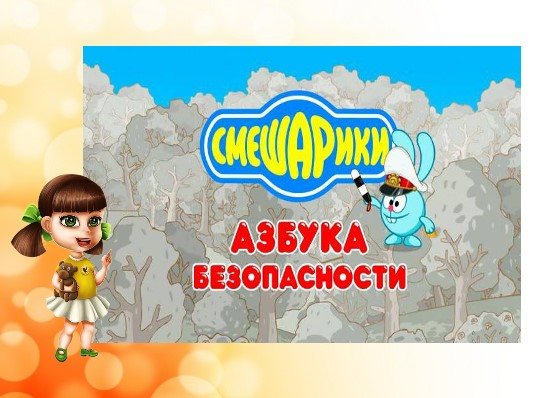
“Lessons from Aunt Owl” will also teach disciplined behavior. A whole series of these cartoons was filmed dedicated to road safety. The series last 5 minutes, are arranged in a logical sequence, and you can use them to teach the rules and even build a lesson plan. I personally find “In the yard and entrance”, “Bicycle”, “Metro and railway” very useful.
What can happen at home?
What can happen to a child in a familiar home environment? Toddlers are great experimenters and want to try everything. Even things that don’t occur to adults. The first is, of course, matches. Firstly, it is advisable to hide them, and secondly, it is important to remind that matches are not a toy. But even if they are securely hidden, a fire may start in the home. Due to a short circuit, too hot heater, due to the fault of the neighbors. What to do?
- If smoke or fire is observed, you should immediately run to an adult and report the fire or smoke.
- If there is no adult at home, you need to open the window, door and call for help, and if possible, leave the room.
- Under no circumstances should you hide in a closet, under the bed, in a closet or other places where the child will be difficult to find.
- Call 01. To do this, parents need to make sure that the child remembers his address. Only parents, the kindergarten is powerless here.
In these cases, we practice the game “Where to hide in case of fire”: we offer children places to hide, and they choose whether they can go there or not. In fact, you can't go anywhere. We also use demonstration cards with pictures “The ABCs of Safety. Alone in the House” , telling about dangerous situations at home. Each card is supplemented with rhymes for children about the most correct way out of the situation.
This series also includes educational walking games “Alone at Home” and “Learning with Passion” . The first concerns purely domestic situations, the second - at home, the street and nature. They can be played by 2-4 people. You can buy a couple of these and a couple of these games for your group to keep all the children interested at the same time. The series “Smesharikov” tells about the fire: “Games with Fire” , .
What else is dangerous for a child in the house? Gas stove, sockets in combination with wire or wet hands, open windows (and closed ones, but without a special child restraint or lock), hammers, household chemicals, first aid kit, mixer. No, this is not a horror film, and sometimes you want to hold a separate lesson for parents. For all these topics, you can choose auxiliary material - poems, pictures, cartoons, games. You can write a separate article about each.
MBDOU Astrakhan No. 52
Work of the MBDOU administration on safety and life protection
and children's health.
The problem of child safety, i.e. achieving comfortable living conditions is the primary task of an educational organization.
Today, despite the serious steps taken by preschool educational institutions in the field of legislative regulation of issues of ensuring normal labor protection conditions and updating the regulatory framework, in practice the root causes of serious accidents with children, as well as the low level of protection of their health and life, are still insufficiently established.
Modern life has proven the need to ensure life safety and has required training for MBDOU employees, parents and pupils in a safe lifestyle in difficult conditions of social, man-made, natural and environmental troubles.
The concept of life safety in preschool educational institutions previously included the following aspects
:
vProtecting the life and health of children
vEnsuring safe working conditions for preschool employees
But the modern world has changed its approach to the problem of security; it also includes such concepts as environmental disaster and terrorism
.
The actions of the head of an educational organization to ensure the safety of all participants in the educational process are based on compliance with the requirements of legislative documents in this area.
The relevance and relevance of the security problem in an educational institution are determined by the needs of the preschool education system and existing contradictions:
vTargeted activities of parents and all employees of MBDOU in matters of children’s safety, their mastering of appropriate behavioral skills, and the basics of life safety.
vCreation of a unified safe educational space on the basis of a kindergarten.
Main tasks
in the field of ensuring the safety of the educational space are:
vStudy and implementation of the main directions of the legislation of the Russian Federation on security issues, development and implementation of regulatory, methodological and other local acts, instructions for the formation of a safe educational environment;
v Creation of medical, social, pedagogical, organizational and technical conditions that ensure the safety and health of all participants in the educational process;
vEnsuring compliance by employees and students of MBDOU with the requirements of legislative and other normative and legal acts regulating the creation of healthy and safe educational conditions;
vPrevention of accidents with children and employees during the educational process;
vPrevention of industrial injuries;
vCompliance with fire safety rules and compliance with fire regulations;
vFormation of stable skills of safe behavior in students and employees in emergency situations"
vEquipping the educational institution with fire-fighting and security equipment, protective and fire-extinguishing equipment;
vIncreasing the efficiency of work to prevent child road traffic injuries, interaction with city traffic police departments
vEnsuring the safe operation of the building, equipment and technical training facilities.
Management component
consists in organizing the implementation of the listed tasks, analysis and forecasting. For our institution, this is primarily:
vRegulatory support
vScientific and methodological support
vDevelopment of programs and recommendations
vCertification of workplaces according to working conditions
Ensuring the safety of participants in the educational process is a problem that all heads of preschool educational institutions face. To implement the assigned tasks, it was necessary to create an optimal management structure for the preschool educational institution and delegate a number of powers.
The safety problem of preschool educational institutions is determined by several directions
:
vEnsuring labor safety for preschool employees.
vEnsuring the protection of life and health of students (fire safety, personal safety, safety at home, prevention of road traffic injuries).
vFire safety.
vAnti-terrorism protection.
vPrevention and response to emergency situations.
CURRENT SAFETY ASPECTS
, decided in MBDOU.
Let us dwell on some current security aspects addressed in an educational organization.
PHYSICAL SECURITY
– ensuring law and order and anti-terrorism protection, safety in emergency situations, labor protection. The state of anti-terrorist security of an object is one of the criteria for ensuring the safety of pupils and staff of preschool educational institutions, creating conditions that guarantee the protection of life and health during the educational process:
vPreschool educational institutions have appointed those responsible for organizing work to ensure the safety of participants in the educational process.
v An action plan in emergency situations has been developed, documentation on the actions of employees and students of the institution in the event of the threat or occurrence of emergencies or natural disasters.
v A safety passport (anti-terrorism protection) has been developed.
vPreventive work is being carried out with staff and children to prevent (prevent) emergency situations, incl. carrying out:
1. on-site training for the evacuation of staff and students in the event of an emergency within the framework of a 19-hour program;
2. classes, leisure time, conversations on life safety with students.
vInformation stands have been set up on fire safety rules, traffic rules, and anti-terrorism security.
vThe preschool institution and the surrounding area are systematically inspected for their security and detection of foreign objects.
vThe administration of the educational institution regularly, in accordance with the schedule, undergoes training on labor protection.
v An intercom is installed on the front door.
FIRE SAFETY
.
Fire safety requirements are special conditions of a social and (or) technical nature established in order to ensure fire safety by the legislation of the Russian Federation, regulatory documents or authorized government bodies (clause 1, chapter 1 of PPB 01-03). Our educational organization has developed:
vRegulations on the organization of work to ensure fire safety.
vFire mode.
vFire prevention plan.
vThe technical condition of the building is inspected and fire electrical safety is assessed.
vTargeted funds are allocated for fire prevention measures.
vFire warning system installed.
vResistance measurements are being carried out.
vThe institution is equipped with primary fire extinguishing equipment (verification is carried out according to plan).
vAt the expense of the budget, training is provided for the head and deputy head of the fire safety department to the extent of the fire-technical minimum.
vTraining sessions are conducted to evacuate children and employees in case of a fire.
vFire retardant treatment of combustible structures is carried out.
vA fire declaration was developed and approved.
PREVENTION OF CHILDREN'S ROAD TRANSPORT INJURIES
.
A significant layer of work is the prevention of children's road traffic injuries and the formation of children's skills for safe behavior on the roads. Increasing traffic density makes roads increasingly dangerous for children and, accordingly, the issues of preventing children's road traffic injuries do not lose their relevance.
In order to increase the effectiveness of work on the prevention of children's road traffic injuries, the following work is being carried out in a preschool institution:
vInterdepartmental interaction has been established between the preschool institution and the city traffic police department.
vIssues of ensuring the safety of all participants in the educational process are considered at meetings of teaching staff and administrative meetings with the head.
vForward planning has been developed and effectively used in work.
vStands have been set up for children and parents on traffic rules.
CONCLUSION:
The concept of “security” in the broadest sense of the word includes not only: organizing the protection of participants in the educational process from emergency situations, such as fires, natural, environmental and man-made disasters,
vtransport and household injuries,
v insufficiently protected working and study conditions,
villegal invasion of personal and information space,
but also terrorist threats, extremism and violence against individuals.
It is also the ability to correctly assess external factors and respond quickly and adequately to them.
Only if all these factors are taken into account simultaneously can we talk about creating an effective comprehensive security system.
Ensuring safety depends not only on equipping educational facilities with the most modern technology and equipment, but also, above all, on the human factor, i.e. on the literacy and competence of people responsible for the safety of educational institutions and the educational process, on the coordination of their joint work with the administration and teachers, on the preparedness of students and employees of educational institutions to act in emergency situations.
FIRE SAFETY IN SUMMER
A fire can occur anywhere and at any time. Therefore, you need to be prepared for it. The main thing to remember is that matches and lighters are used for household chores, but not for playing. Even a small spark can lead to big trouble anywhere, even on the street.
TEACH FIRE SAFETY RULES WITH CHILDREN
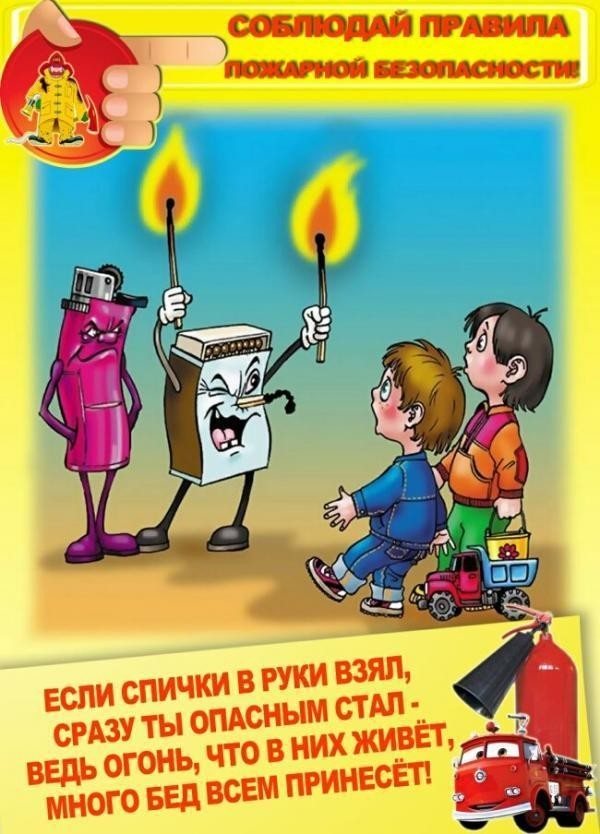
- Do not play with matches, do not make fires!
- Do not turn on electrical appliances if adults are not at home!
- Do not open the oven door!
- Do not throw empty jars and bottles of household chemicals, especially aerosols, into the fire!
- Do not play with gasoline or other flammable substances!
- Never hide in case of fire, either under the bed or in the closet!
- In case of fire, call 01, 112 (give your address, phone number, last name and tell what is burning)!
- Don't play with fire!
WATER SAFETY IN SUMMER
Most families prefer to spend hot summer days on the beaches of bodies of water - lakes, rivers, seas. Adults and children enjoy swimming and sunbathing and breathing fresh air. However, water can be dangerous.
Therefore, before traveling to a holiday destination, you should study some recommendations:
- Do not allow your child to swim without your supervision, especially on mattresses or inflatable rings.
- Let your child into the water only wearing a swimming vest or arm sleeves.
- Do not allow children to play games where participants hide under water or are drowned. Such entertainment can end in tragedy.
- Do not allow swimming behind buoys or diving in unknown parts of the reservoir, as stones and tree branches often lead to injuries.
- Monitor the time your child spends in the water to prevent hypothermia.
- To avoid sunburn, lubricate your child's skin with special sunscreen.
SAFETY OUTDOORS IN SUMMER
If you manage to get out into nature (forest, park), be sure to read the safety rules for children in summer:
- In such places there are usually a lot of ticks, whose bites provoke serious illnesses. Therefore, it is better to dress the child in pants and closed shoes. Moreover, the trousers should be tucked into the elastic band of the socks. Treating the surface of clothing with insect repellents won't hurt either.
- Explain to your child that it is forbidden to touch unfamiliar mushrooms and eat unknown berries or fruits growing in the forest, because they can be poisonous.
- To avoid being bitten by insects such as bumblebees, wasps and bees, teach your baby to remain still when they are around.
- Keep your child away from animals that could bite him and infect him with rabies.
- Never leave children unattended - they may get lost.
FIRE SAFETY IN THE FOREST
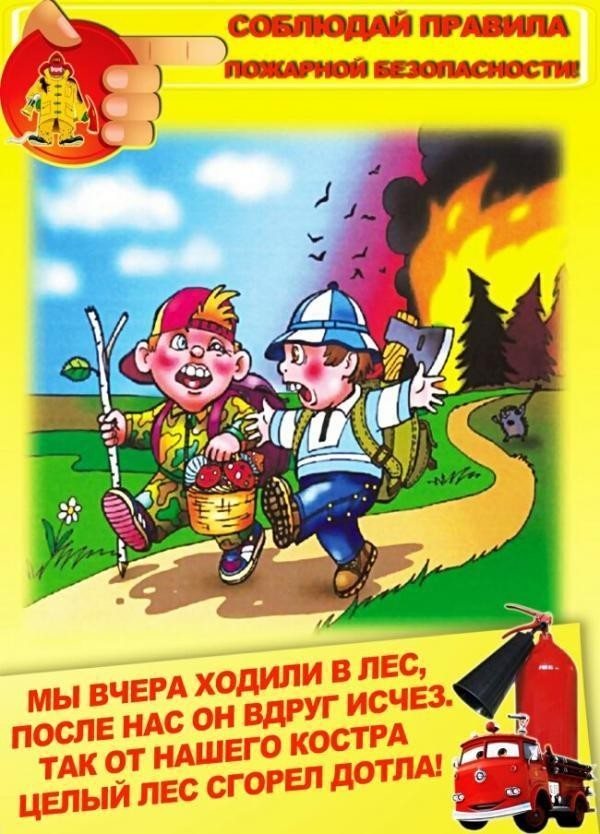
MOST FOREST FIRES ARE DUE TO PEOPLE'S CARELESS HANDLING OF FIRE.
When in the forest, you must remember that there is a very real danger of a forest fire even from a small fire source, especially in dry, warm and windy weather.
When a fire is detected in a forest, the main task is to prevent the fire from gaining strength and spreading. In cases where you see that you cannot extinguish the fire yourself, you must immediately report the fire to the fire department by calling “01”.
When extinguishing fires in the forest, the most common method is to overwhelm the fire at the edge of the fire . Green branches are used for overlapping. It is effective to throw soil at the edge of the fire, cooling the burning materials and depriving them of air access.
YOU MUST FOLLOW SIMPLE RULES FOR USING A FIRE IN THE FOREST
- It is prohibited to light fires in dry, warm (hot) and windy weather.
- Fires should be lit in specially designated areas .
- It is advisable to have water near the fire , as well as branches to cover the flames in case the fire spreads.
- You should not light a fire near trees , as this may kill them.
- avoid smoking when visiting the forest . Remember! That an unextinguished cigarette can ignite dry grass and cause a fire.
- Conscious behavior in the forest and strict adherence to simple fire safety rules will guarantee the preservation of forests from fires.
RECOMMENDATIONS GENERAL RULES FOR THE SAFETY OF CHILDREN ON SUMMER HOLIDAYS
- Tell your children how to behave correctly on the playground, in particular, riding on the swings. You need to approach them from the side; sit down and stand up until it comes to a complete stop; hold tight when riding.
- Stay hydrated to prevent dehydration. Give your child purified natural water without gas.
- If your child rides a bicycle or roller skates, buy him a protective helmet, elbow pads and knee pads.
- FOLLOWING SIMPLE RECOMMENDATIONS WILL HELP PROTECT YOUR CHILD'S LIFE AND HEALTH AND WILL ALLOW YOU TO SPEND YOUR SUMMER HOLIDAYS WITH MAXIMUM ENJOYMENT!
ROAD SAFETY DATA SHEET
ACCESSIBILITY PASSPORT for a social infrastructure facility (SIF)
Federal Anti-Terrorism Law link
Federal Civil Defense Act link
Federal Law on the Protection of the Population and Territory from Natural and Man-Made Emergencies link
Read the comprehensive plan for countering the ideology of terrorism in the Russian Federation for 2013-2018 here
Methodological recommendations “Threats caused by the spread of ideas of terrorism and religious and political extremism, interethnic and interfaith hatred” read here
Read methodological recommendations for organizing information counteraction to terrorism and extremism in society here
Read methodological recommendations for teachers here
Science and education against terror link
National counter-terrorism portal link
Children's safety portal of the Ministry of Emergency Situations of Russia Spas-Extreme link
Roskomnadzor opened an information and entertainment website for children and teenagers
https://personaldata.children/
Security video ANITERROR
Consultation for parents “Children's safety in summer” read
Children's safety in summer. Basic rules of behavior read here
Read safety instructions here
Read medical aids here
Read poems for children about the rules of safe behavior on water here
About not going with strangers
We conducted an experiment to see whether a child would follow a stranger with a beautiful Yorkie if he offered to leave the kindergarten playground. Many children were walking. Then we held a lesson on this topic, and the uncle was replaced with a 14-year-old girl with a kite. The children still followed her, but much smaller. Either the kite is not as interesting as the Yorkie, or after the lesson at least someone remembered something.
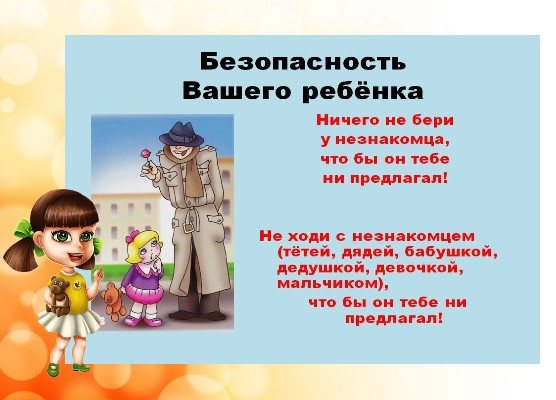
We are continuing to work on this issue. Because the topic “stranger with candy” is very important for preschool children and schoolchildren, it is difficult to overestimate it. They must explain why you can’t follow your uncle and get into his car in kindergarten, at school and at home. We discuss the following points:
- If a stranger says that he was sent by the parents to take the child home, he cannot be trusted.
- If an adult you know says the same thing, you must first ask the teacher if her parents called her.
- If someone on the street offers candy or a kitten to take home, don’t take it and don’t go.
- If they insist, shout loudly “help, this is not my dad!” and run away. We even practice to see who can shout the loudest.
There are areas of modern life that are not yet reflected in methodological recommendations. For example, children's behavior on the Internet. Even kindergarteners already have no problem watching videos on YouTube and playing funny online games with cats. Recently, one mother installed the “parental control” function on her child’s tablet and found out that her daughter was being “embarrassed” by some person via Viber. The child was afraid to admit, he was ashamed. Mom changed the girl’s number, and we are preparing a conversation about what to do in such cases.
Fire safety for preschoolers
Fire is an ardent element that can be both useful and dangerous. What are the benefits of fire? It can warm you up when it's cold. Why is open fire dangerous? You can get burned, so you need to keep your distance and not approach it. It is important to convey this to the child. And consolidate the acquired knowledge in practice, and the basics of safety for preschool children in terms of handling fire, as well as traffic rules on the roads, are best studied in a playful way. A simple reenactment: a fire truck is rushing to respond to a call, children were playing with matches, and a fire occurred. Firefighters need to quickly save children in trouble. Luckily, the firefighters made it in time! They put out the fire and told the children: “You can’t play with matches, it’s life-threatening!”
Parents should take into account that there should be few direct prohibitions when coordinating the child’s behavior, otherwise they will not be taken into account. To teach the basics of safety, it is better to use positive ways to influence a preschooler, in particular, visually demonstrate examples of critical situations and model their possible consequences, and praise him or otherwise encourage him for each case of compliance with the learned rules.
Inexhaustible topics to discuss with children
The topic of child safety is inexhaustible. We haven’t even touched on rest, behavior on the pond and in the forest. And these topics conceal interesting questions: why you shouldn’t walk under balconies and on thin ice in winter, lick metal structures in the cold, or dive in an unfamiliar place on a lake. I hope we can discuss them someday.
I know that many of our parents discuss with their children the books they read to them. And they specifically focus children’s attention on situations where the hero did the right thing or the wrong thing from a safety point of view. They discuss how to do it right.
For example, is it possible to go into an unfamiliar forest during a blizzard, is it necessary to warn your parents, even if you leave the house for a minute. I really support this approach. Let’s say, “The Story of How Findus Got Lost” will give a reason to talk about what to do if you’re really lost (don’t hide!). I would be grateful if you could write books from fiction that you can discuss with your child.
Children are not born knowing safety rules. They simply don't think about such things. For kids, the world is beautiful and interesting, so we need to rush forward. We can adjust their trajectory. The following points are important:
- It is worth remembering that children often copy the behavior of their parents - on the road, in nature, in society. And to teach something, it’s better to start with yourself.
- Despite the jokes and cartoons, children need to take the lessons seriously enough. But at the same time, we did not develop neurosis because of our “scarecrows”. We repeat that all these things should not happen if you remember how to behave. And if you don’t know how, don’t be afraid to follow common sense.
I have only outlined issues that can be raised in conversations on security topics. The rest is up to you! Don’t forget to share blog articles with your friends, and I also suggest subscribing to blog updates - this way you will always know about the release of new useful materials.
Sincerely, Tatyana Sukhikh! Till tomorrow!
By the way, I recommend reading:
